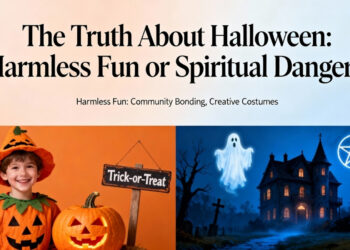No products in the cart.
Christian Spirituality in Religious Art and Iconography
This post contains paid and/or affiliate links. I make a small commission at no extra cost to you. Please see our Privacy Policy.
Look, I’m not gonna lie—when most people think about religious art, they picture those intimidating paintings in old museums where everyone looks weirdly serious and kind of glowy. But here’s the thing: Christian art has been the ultimate visual storytelling tool for nearly 2,000 years, and it’s way cooler than you might think.
Christians have been creating art since basically day one. We’re talking paintings, sculptures, those gorgeous illuminated manuscripts that must’ve taken forever to make, and icons that people still treasure today. Why? Because sometimes words just don’t cut it when you’re trying to express something as massive as faith.
What Makes Icons So Special?
Here’s where things get interesting. Icons aren’t just pretty pictures—they’re considered spiritual hotlines to the divine.
In the Eastern Orthodox Church, icons are a huge deal. These sacred paintings show Christ, Mary, Bible scenes, or saints, and people don’t just admire them—they venerate them. That means showing respect, reverence, and praying to the figures depicted.
You’ll find icons everywhere in Orthodox churches and homes. They’re like visual reminders that the divine is always present, always accessible.

The Whole “Are Icons Idols?” Drama
So back in the 8th and 9th centuries, the Byzantine Empire had this massive controversy. Some folks (called Iconoclasts—literally “image breakers”) argued that icons were basically idols and violated the whole “no graven images” commandment.
The debate got heated. Like, really heated.
Eventually, the church developed a whole theology defending icons. The key argument? There’s a difference between:
- Worship (latria): Reserved exclusively for God
- Veneration (dulia): Showing respect to icons as representations of the divine
The pro-icon side won, and icons became cemented as a central part of Eastern Orthodox practice.
The Art Behind the Sacred
Icon painting isn’t something you just casually pick up as a hobby. It’s considered a holy skill, traditionally practiced by monk artists in monasteries who followed specific schools and techniques.
Icons have a fixed style—you can’t just freestyle it. This strict adherence to tradition ensures that every icon maintains its sacred essence and connects modern worshippers to centuries of Christian history.

How Early Christians Started This Whole Thing
Early Christian art (fancy name: Paleochristian art) popped up in the second and third centuries. Christians were figuring out how to express their new faith visually, and guess what? They borrowed heavily from Roman culture.
They basically took Roman artistic styles and said, “We’re keeping the technique, but changing the subject matter.”
Early Christian artists used:
- Frescos (wall paintings)
- Mosaics (those intricate tile artworks)
- Sculptures
- Illuminated manuscripts (hand-decorated books that are stunning)
What They Actually Painted
These early artists focused on:
- Biblical scenes that taught the faith
- Images of Jesus and Mary
- Saints and their stories
- Tons of symbols and allegories (because sometimes you had to be subtle about being Christian)
Here’s the catch though: we don’t have as much early Christian art as we’d like. Christians faced persecution, and there were religious restrictions on creating “graven images.” So a lot of it either wasn’t made or didn’t survive.

Byzantine Art: When Iconography Got Serious
When the Byzantine Empire rolled around (4th to 15th centuries), Christian art evolved into something incredibly distinctive. Byzantine icons are instantly recognizable: elaborate, two-dimensional, and loaded with symbolism.
The Symbol Game Was Strong
Byzantine artists followed strict rules about how to represent holy figures. Every color, gesture, and symbol meant something specific:
- Gold backgrounds: Represented the heavenly realm (and looked absolutely stunning)
- Red: Symbolized divinity
- Green: Represented earthly life
The figures were flat and frontal—this wasn’t about realistic perspective. It was about conveying the divine nature of the subjects.
Why It All Mattered
Byzantine iconography wasn’t just decoration. These images held deep theological significance. They conveyed complex spiritual concepts to people who might not be able to read dense theological texts.
Each icon followed specific rules for depicting Christ, Mary, and the saints. This consistency meant that believers across the empire could recognize and understand the religious imagery, no matter where they worshipped.
Modern Christian Art: Breaking the Mold
Fast forward to today, and Christian art looks wildly different—in the best way possible.
Contemporary Christian artists aren’t bound by those old Byzantine rules. They work in all kinds of styles: realistic paintings, abstract sculptures, digital art, installations—you name it.

What Drives Modern Christian Artists
Today’s artists draw inspiration from:
- Biblical narratives (but with fresh perspectives)
- Theological concepts
- Personal spiritual experiences
- Contemporary issues viewed through a faith lens
The goal? Make people actually stop and think. Modern Christian art aims to:
- Present familiar stories in new, thought-provoking ways
- Spark conversations about faith in contemporary society
- Help viewers connect with the divine in fresh ways
- Challenge assumptions about what Christian art “should” look like
- Address modern issues through a spiritual lens
This isn’t about abandoning tradition—it’s about keeping religious art relevant and accessible to new generations.
Why Symbolism Still Packs a Punch
Whether we’re talking about ancient Byzantine icons or contemporary installations, Christian art uses visual language to communicate what words sometimes can’t.
The symbolism acts like a vocabulary that deepens spiritual understanding. Once you know that gold means heaven or that certain hand gestures have specific meanings, you start seeing layers of meaning you’d miss otherwise.
It’s like unlocking a secret code that’s been hiding in plain sight for centuries.
The Bottom Line
Religious art has been Christianity’s visual voice for millennia, and it’s not going anywhere.
From those early Roman-inspired frescos to Byzantine gold-leaf masterpieces to today’s genre-bending installations, Christian art keeps evolving while staying rooted in faith. It educates, inspires, connects, and invites contemplation—all without saying a single word.
The best part? You don’t need a theology degree to appreciate it. Christian art speaks across languages, cultures, and time periods. It engages your senses and emotions in ways that pure text just can’t match.
So next time you see a piece of religious art—whether it’s a 1,000-year-old icon or a contemporary sculpture—take a moment to really look at it. There’s probably way more going on than you think. And honestly? That’s kind of beautiful.
FAQ
What is religious art?
Religious art refers to visual artworks that depict religious themes, symbols, or figures and serve to express and explore spirituality and faith.
What is the significance of icons in Christian art?
Icons are unique in Christian art, particularly in the Eastern Orthodox Church. They are sacred paintings that depict Christ, the Virgin Mary, scenes from the Bible, or the lives of Saints, and serve as a spiritual link between God and the worshipper.
How does early Christian art differ from Roman art?
Early Christian art, known as Paleochristian art, adapted Roman motifs and styles but had distinctively Christian content and context. It often depicted biblical scenes, Jesus, the Virgin Mary, and saints, and used symbols and symbolic representations to convey religious messages.
What is the role of iconography in Byzantine art?
Byzantine art placed a strong emphasis on religious iconography. Byzantine icons served as visual representations of religious beliefs and were used as objects of veneration. They followed strict rules and employed specific symbols to represent Christ, the Virgin Mary, and saints, conveying theological concepts and spiritual ideas.
How does contemporary Christian art differ from traditional Christian art?
Contemporary Christian art encompasses various styles and allows for artistic freedom and interpretation. Artists draw inspiration from biblical narrative, theological concepts, and personal spirituality, resulting in diverse representations of Christian imagery.
What is the purpose of religious art in Christian expressions?
Religious art serves as a vehicle for conveying the depths of the Christian faith. It depicts critical religious themes, educates the faithful, fosters a connection with the divine, inspires worship, and invites contemplation.















